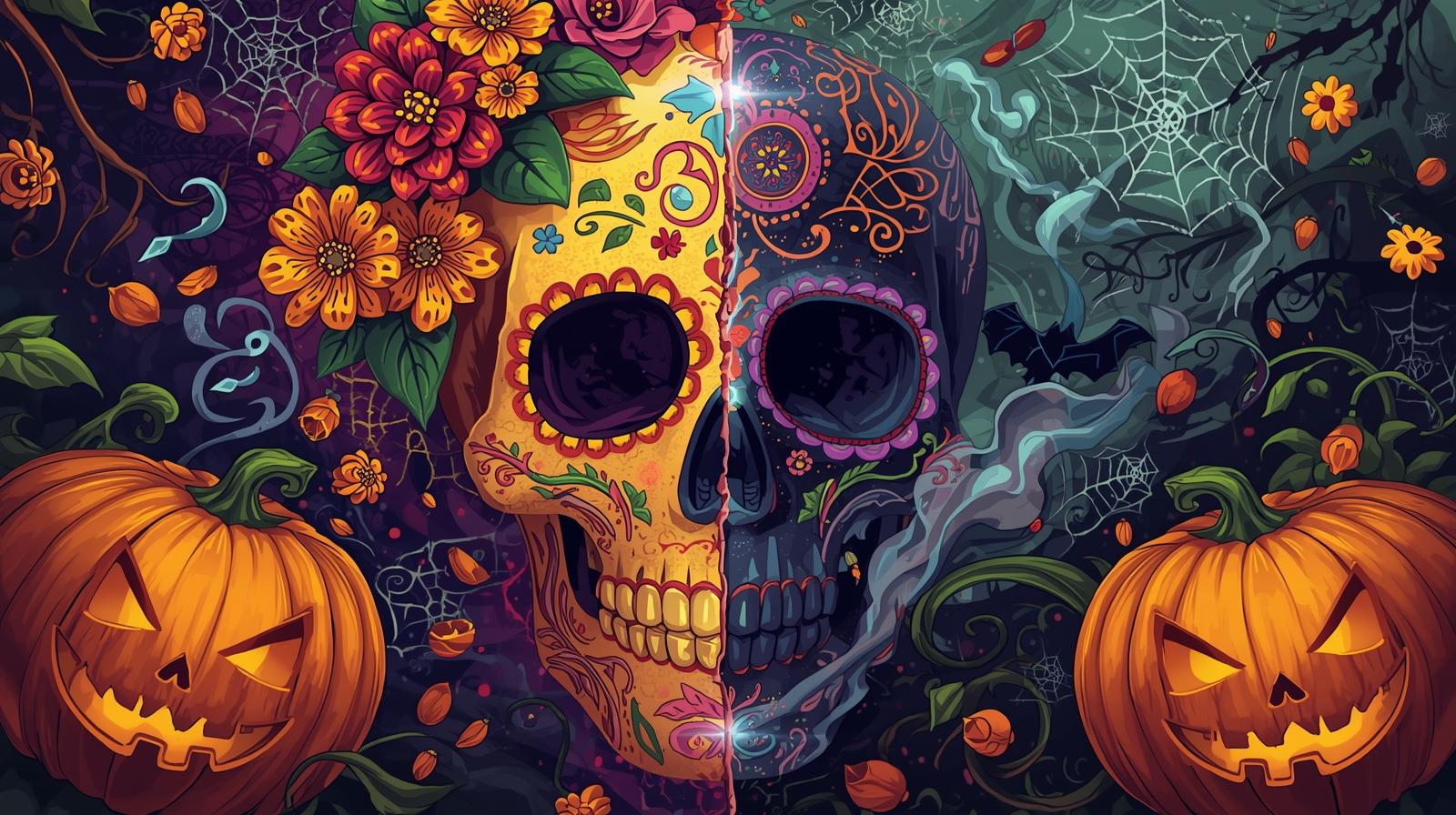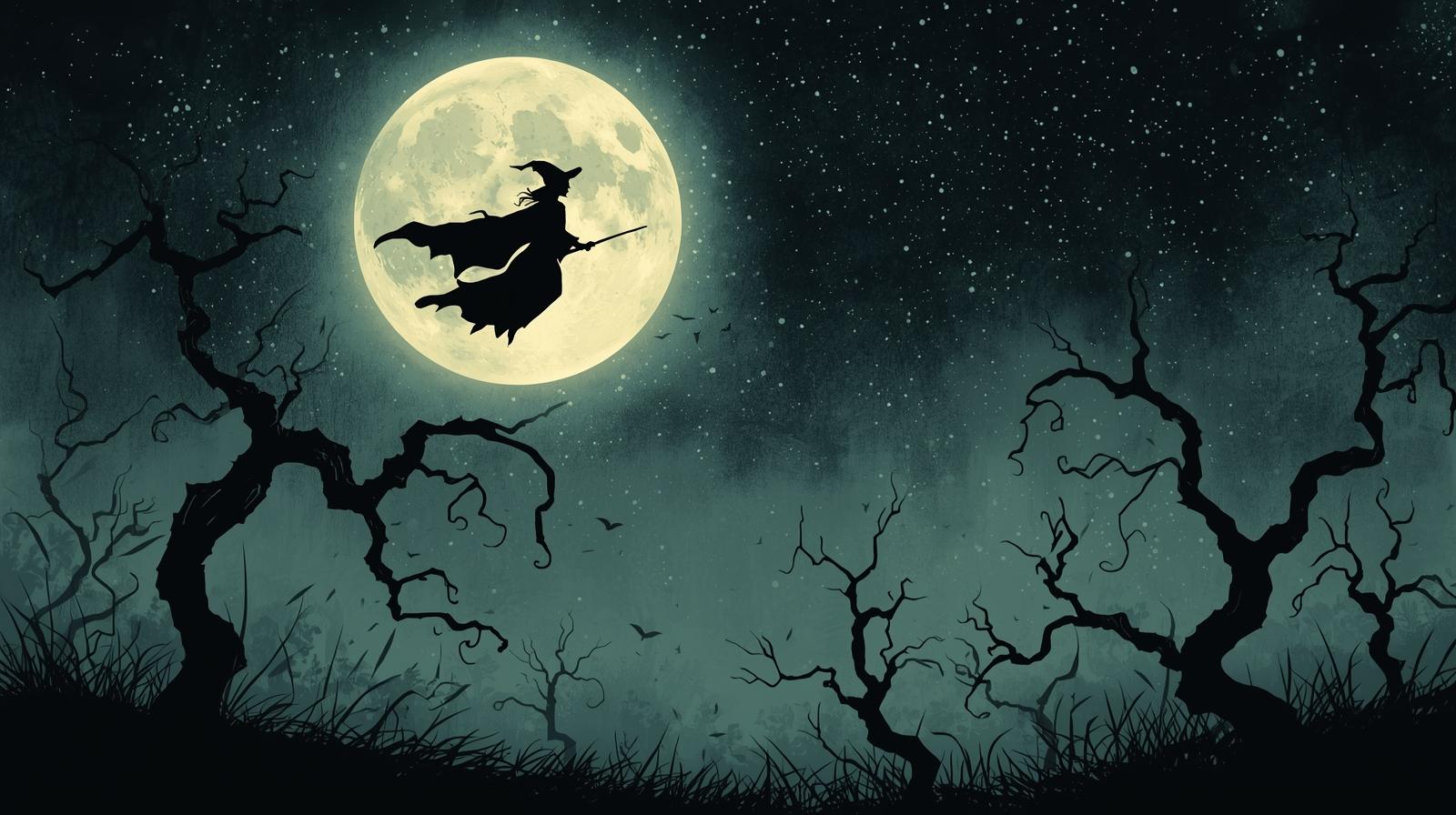
Every fall, sugar skulls and skeletons fill store shelves alongside pumpkins and ghosts, leading many to wonder — aren’t Day of the Dead and Halloween basically the same thing? While both honor spirits and take place around the same time, their meanings, roots, and celebrations couldn’t be more different.
🎃 Halloween: Fear, Fun, and Frights
Halloween traces its origins to the ancient Celtic festival of Samhain, celebrated in Ireland and Scotland over 2,000 years ago. Samhain marked the end of the harvest season and the beginning of winter — a time when the Celts believed the veil between the living and the dead was at its thinnest.
When Christianity spread through Europe, the holiday merged with All Hallows’ Eve, the night before All Saints’ Day. Over centuries, it evolved into the modern Halloween we know today — a mix of costumes, candy, haunted houses, and spooky fun.
At its heart, Halloween celebrates the thrill of fear. We dress up as monsters to play with darkness, to laugh at what scares us, and to enjoy a night of tricks and treats.
💀 Day of the Dead: Love, Memory, and Connection
Día de los Muertos (Day of the Dead), celebrated on November 1st and 2nd, is a deeply spiritual Mexican tradition that blends Indigenous Aztec beliefs with Catholic influences brought by Spanish colonizers.
Instead of fearing death, Día de los Muertos celebrates life and memory. Families build ofrendas (altars) decorated with marigolds, candles, sugar skulls, photos, and favorite foods to welcome back the souls of their loved ones for one night of reunion.
It’s not about horror — it’s about honor. The laughter, colors, and music reflect joy for those who lived, reminding us that death is just another part of the cycle of life.
🕯️ The Key Differences
| Aspect | Halloween | Day of the Dead |
|---|---|---|
| Origin | Celtic (Samhain) | Indigenous Mexican (Aztec) + Catholic |
| Date | October 31 | November 1–2 |
| Focus | Fear, fun, and the supernatural | Love, remembrance, and family |
| Symbols | Pumpkins, ghosts, bats, witches | Marigolds, skulls, candles, photos |
| Tone | Spooky and playful | Joyful and reflective |
🌸 Where the Two Connect
Even though they come from different worlds, both holidays honor the dead and the mystery of the afterlife. Each reminds us that the boundary between the living and the spirit world grows thin this time of year.
Today, you’ll often see the two blend in decorations and pop culture — skeletons with sugar skull makeup at Halloween parties or calaveras alongside jack-o’-lanterns. While it’s easy to mix them up, understanding their roots helps keep each one respected and celebrated for what it truly represents.
🌕 Final Reflections
Halloween gives us a night of imagination and fun — a way to face our fears. Día de los Muertos gives us comfort — a way to keep the memories of our loved ones alive.
Both, in their own way, teach us not to fear death, but to understand it, embrace it, and even celebrate the eternal connection between life and what lies beyond.
Lisa Crow contributed to this article. She is a true crime junkie and lifestyle blogger based in Waco, Texas. Lisa is the Head of Content at Gigi’s Ramblings and Southern Bred True Crime Junkie. She spends her free time traveling when she can and making memories with her large family which consists of six children and fifteen grandchildren.
